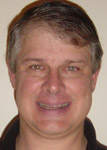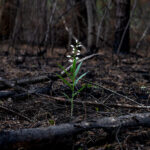When it comes to detection and decontamination, many factors play a role in the decision-making process. This four-part series has been created to not only provide important information on the equipment itself, but also to discuss the basics of various chemicals and their effects. In response to releases of CWA, there may not be one technology or one “answer” that is correct. The responder must take into account all of the clues to determine the presence or absence of CWAs in order to take appropriate action. The first part of this series is titled “Decision-Making in Chemical Warfare Agent (CWA) Response” (AP-102). This article describes the clues to look for in CWA response and how to layer them with the various CWA detection technologies available. The physical clues related to CWAs include where they come from, how they behave, and how they are disseminated. It is also important to note biological indicators, including animals and human victims. This article also discusses location, ification, andentification technologies, as well as the pluses and minuses of each one – e.g., simulants for these technologies and the cost of ownership for each one. Finally, this article presents strategies for layering the physical and biological clues with the location, ification, andentification clues to come to the right conclusions when responding to a CWA incident.
While the Environics ChemPro100 was designed as a Chemical Warfare Agent (CWA) “ifier” for military applications (“Decision-Making in Chemical Warfare Agent Response,” Environics Application Note AP-102), it has the added versatility to be used for a wide variety of HazMat applications like “sniffing” and decontamination (“The ChemPro as a Decontamination Tool,” AP-104), Clan Lab interdictions (“Orthogonal Detection for More Complete Protection from Clandestine Methamphetamine Lab Chemicals,” AP-101), and even firefighting overhaul activities (“Orthogonal Detection for More Complete Protection from Toxic Gases and Vapors in Overhaul Operations,” AP-103).

Christopher Wrenn
Christopher Wrenn is the vice president of Americas sales for AEssense Corp., a Silicon Valley developer and manufacturer dedicated to providing innovative technological solutions for plant growers worldwide. Previously, he was senior director of sales and marketing for Environics USA, a provider of sophisticated gas and vapor detection solutions for the military, first responder, safety, and homeland security markets. He was also a key member of the RAE Systems team. He has extensive experience teaching gas and vapor detection and has been a featured speaker at more than 100 international conferences. He has written numerous articles, papers, and book chapters on gas/vapor detection and received the following awards: 2011 “Outstanding Project Team Award,” in recognition of outstanding service and dedication to the Real Time Detection Registry Team presented by the AIHA (American Industrial Hygiene Association) President; 2015, received the James H. Meidl “Instructor of the Year” award at The Continuing Challenge, Sacramento, CA presented by CA State Fire Marshal; and 2016, received the “Level A Award” from the International Hazardous Materials Response Team Conference “For your Leadership Service and Support to the Hazardous Response and Training Program.” He can be reached at chriswrenn@att.net
- Christopher Wrennhttps://domesticpreparedness.com/author/christopher-wrenn
- Christopher Wrennhttps://domesticpreparedness.com/author/christopher-wrenn
- Christopher Wrennhttps://domesticpreparedness.com/author/christopher-wrenn






